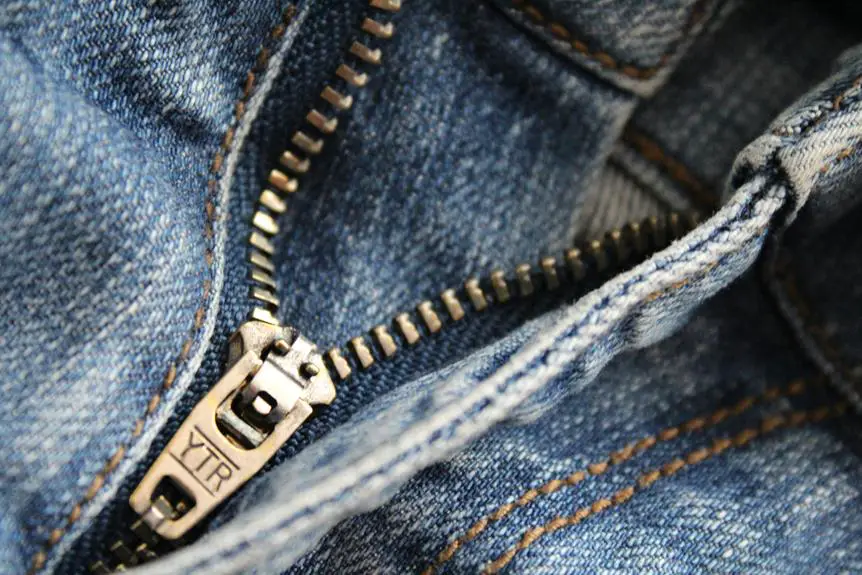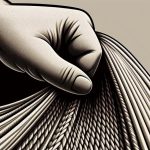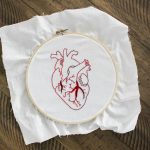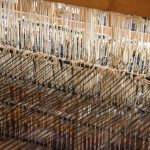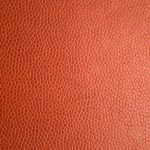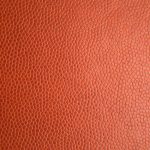When you consider fabric durability, you might find yourself weighing the strengths of duck canvas against denim. Duck canvas, with its tight weave, often handles abrasions and rough usage better, making it a choice for tough work environments. On the other hand, denim, while resilient, shows wear more noticeably in high-stress areas. So, when it comes to specific applications, which fabric truly stands out? Understanding the subtle differences could significantly impact your choice—let's explore what these characteristics reveal about each fabric's real-world performance.
Table of Contents
Overview of Duck Canvas
Duck canvas is a sturdy, heavy-duty fabric known for its durability and water resistance, making it ideal for a variety of applications.
You'll find duck canvas used in everything from tents and tarps to workwear and upholstery. Its tight weave provides excellent strength, allowing it to withstand abrasive conditions without tearing or fraying easily.
When you choose duck canvas, you're investing in longevity. This fabric resists wear and maintains its shape even under tension.
It's typically made from cotton or a cotton-polyester blend, giving it a soft feel while still being tough. Additionally, duck canvas can be treated for enhanced water resistance, making it suitable for outdoor use.
You'll notice that duck canvas comes in various weights, which affects its suitability for different projects. Thicker options provide even more durability, while lighter weights can be more flexible, perfect for crafting.
Overview of Denim
Denim offers a unique blend of strength and style, thanks to its specific fabric composition and structure.
You'll notice various stitching and weave techniques that enhance its durability and look.
Plus, denim's impressive resistance to wear and tear makes it a go-to choice for many, whether you're dressing up or down.
Fabric Composition and Structure
When you explore denim, you'll find it features a sturdy cotton twill weave that gives it strength and durability.
This structure consists of two yarns woven together, usually with a dark warp and lighter weft, creating that distinctive diagonal ribbing.
You might notice that this weaving technique provides both flexibility and resilience, which is crucial for a fabric that's often put to the test in various environments.
Denim's typical composition includes 100% cotton, but many manufacturers blend synthetic fibers to enhance durability and stretch, making it more comfortable to wear.
The addition of spandex or elastane can give you that perfect fit without sacrificing the material's ruggedness.
Depending on the type of denim, whether it's classic, stretch, or selvedge, the fabric's weight can vary, impacting its overall durability and feel.
You'll also notice the finish on denim – some styles come pre-washed or distressed, which affects how the fabric ages.
Stitching and Weave Techniques
The unique stitching and weave techniques of denim not only enhance its durability but also contribute to its iconic style, making it a wardrobe staple for countless individuals.
When you consider how denim is constructed, you'll notice a few distinctive features that set it apart.
Twill Weave: Denim typically uses a twill weave, creating that classic diagonal ribbing. It's this pattern that gives denim its strength and distinctive appearance.
Selvage Denim: Often seen in higher-end jeans, selvage denim is woven on vintage shuttle looms, resulting in a tighter edge that prevents fraying and enhances durability.
Stitching Patterns: The way denim is stitched can dramatically affect its strength. Double-stitched seams, for example, are common and significantly boost the fabric's overall durability.
Resistance to Wear and Tear
Crafted with robust materials and superior stitching techniques, denim is renowned for its impressive resistance to wear and tear, making it a reliable choice for everyday wear.
You'll notice that its tightly woven fabric handles the rigors of daily activities, from working and playing to casual outings. The natural fibers, typically cotton, contribute to its durability, allowing it to withstand abrasions better than many fabrics.
In terms of resistance, denim's unique structure flexes under pressure yet returns to its original shape, ensuring that it doesn't easily sag or lose form after extended use.
This means your favorite pair of jeans can survive countless washes and still look good. Additionally, the dyeing process employed in denim production adds to its toughness, enabling it to resist fading, even with regular exposure to sunlight.
While some wear and scuffs might occur over time, they often add character rather than diminish the fabric's appeal. Therefore, if you're looking for a reliable, long-lasting material that holds up against daily strains, denim is a fantastic option to consider.
Durability Characteristics of Duck Canvas
When you consider the durability of duck canvas, you'll notice it stands out due to its unique material composition.
You'll find that its wear resistance and water resistance capabilities make it a practical choice for heavy-duty applications.
Let's explore these characteristics in more detail to see how they compare to other fabrics.
Material Composition Factors
Duck canvas excels in durability thanks to its heavy weight and tight weave, making it an ideal choice for demanding applications. This unique composition gives it strength that can withstand wear and tear much better than lighter materials.
When you compare duck canvas to denim, you'll notice key factors contributing to its superior durability.
Duck canvas typically has a greater weight per square yard than denim, providing enhanced resistance to punctures and abrasions.
Made from cotton or a cotton blend, the tightly woven fibers of duck canvas contribute to its robustness, allowing it to handle heavy loads without stretching or tearing.
Many duck canvases are treated for water resistance, making them suitable for outdoor use in various weather conditions.
These attributes not only improve the lifespan of duck canvas products but also ensure they maintain their integrity under stress.
You'll find that if you're seeking long-lasting materials for tough jobs, duck canvas proves to be a top contender, often exceeding the durability of traditional denim.
Wear Resistance Analysis
Duck canvas stands out for its exceptional wear resistance, making it a go-to choice for heavy-duty applications. This fabric is tightly woven, which enhances its ability to withstand abrasion and rough handling.
If you're in the market for materials that can handle the rigors of daily use, duck canvas offers a robust option.
In comparisons with denim, duck canvas typically shows greater durability under stress. While denim is known for its comfort and style, it can wear down faster in high-impact scenarios.
Duck canvas, on the other hand, holds up exceptionally well against prolonged friction and sharp objects. This makes it ideal for items like work gear, tool bags, and outdoor furniture.
Moreover, duck canvas often maintains its structural integrity over time. When washed or exposed to outdoor conditions, its heavy-duty fibers resist fraying and fading better than many denim options.
Water Resistance Capabilities
In addition to its remarkable wear resistance, duck canvas also boasts impressive water resistance capabilities, making it ideal for a range of outdoor applications. Whether you're camping, hiking, or simply enjoying a day at the park, duck canvas can handle the elements like a pro.
Duck canvas outshines denim in wet conditions due to several key factors.
- Tightly Woven Fabric: Duck canvas features a denser weave, limiting water penetration and keeping you dry.
- Durable Finish: Many duck canvas products come with a water-repellent coating, enhancing their resistance to moisture.
On the other hand, while denim does offer some level of water resistance, it generally absorbs moisture more readily, leading to dampness and potential discomfort.
Durability Characteristics of Denim
Denim boasts exceptional durability, making it a popular choice for a variety of workwear and casual clothing. This fabric's tightly woven design enhances its strength, allowing it to withstand daily wear and tear. In fact, the unique weaving technique results in a robust material that can resist fraying and tearing, which is crucial for long-lasting use.
You'll find that denim retains its shape and doesn't easily sag, even after multiple washes or intensive use.
Additionally, the fabric's inherent weight contributes to its durability. Heavier denim fabric weights, typically around 12 oz and above, provide that extra toughness you'll appreciate during demanding tasks.
Denim will also soften over time, creating a comfortable fit while maintaining its structural integrity.
Furthermore, denim is resistant to fading, and quality brands often treat their fabrics to minimize color loss, ensuring your garments look great for longer.
When you invest in good-quality denim, you're not just buying a piece of clothing; you're choosing a robust fabric that can handle your lifestyle.
Wear and Tear Comparison
When comparing wear and tear, it's essential to recognize how duck canvas holds up against denim's established durability. Both materials possess robust characteristics, but their performance can differ based on usage and conditions.
Duck canvas is known for its tightly woven fibers, making it resistant to fraying and tearing. You'll find that this fabric can withstand significant wear, especially in outdoor settings. On the other hand, denim, while durable, may show wear patterns like fading or abrasion faster, particularly in high-stress areas.
Durability Under Pressure: Duck canvas often handles rough conditions better, resisting punctures and abrasions.
Long-Term Wear: Denim can develop a unique character over time, but it might show signs of wear, such as thinning, sooner than duck canvas.
Maintenance Needs: Duck canvas generally requires less maintenance to avoid wear, while denim may need careful washing and handling to preserve its structure.
Choosing the Right Fabric
Considering your specific needs and intended use, the choice between duck canvas and denim can significantly impact both comfort and functionality.
If you're looking for rugged durability, duck canvas shines with its heavy weave, making it ideal for work gear, outdoor activity, or even upholstery projects that require robust fabric. Its water-resistant qualities also offer an advantage for camping or boating scenarios.
On the other hand, if you prefer a soft, flexible feel, denim might be more up your alley. It has a casual vibe and stretches nicely, ensuring comfort for everyday wear. Denim is great for jeans, jackets, and casual attire, making it suitable for both work and leisure. Moreover, its varied weight options allow for versatility based on seasons.
Ultimately, think about your priorities. If durability and weather resistance come first, you'll likely find duck canvas more suitable. However, if comfort and style are what you seek, then denim is the way to go. Assess your lifestyle, activities, and personal preferences to make the best choice. Each fabric has distinct benefits, so selecting the right one can enhance your experience and ensure you have the right gear for your needs.
Frequently Asked Questions
Can Duck Canvas Be Waterproofed for Added Durability?
Yes, you can waterproof duck canvas for added durability. Applying a waterproofing spray or wax helps repel moisture, extending the fabric's life. Just make sure to follow the product instructions for the best results.
How Does Washing Affect the Durability of Denim?
Washing denim can weaken its fibers over time. You should wash it less frequently, using cold water and mild detergent. This way, you keep your jeans looking great and increase their overall durability.
Are There Eco-Friendly Options for Duck Canvas Fabrics?
Yes, you've got eco-friendly options for duck canvas. Look for organic cotton or recycled materials that reduce environmental impact. Brands focused on sustainability often provide durable, stylish choices that meet your needs while being gentle on the planet.
What Are the Typical Weights of Duck Canvas Vs Denim?
When you compare typical weights, duck canvas usually ranges from 10 to 12 ounces per square yard, while denim often falls between 8 to 12 ounces. Your choice depends on the specific application or project needs.
How Do Colorfastness and Fading Compare Between These Fabrics?
When choosing fabrics, you'll find that duck canvas generally holds color better than denim, resisting fading with prolonged exposure. Denim, while stylish, tends to show its age more through fading, affecting its overall appearance.
- Characteristics Of Polyamide - July 1, 2025
- Can You Tumble Dry Polyamide - July 1, 2025
- Can You Machine Wash Polyamide - July 1, 2025

